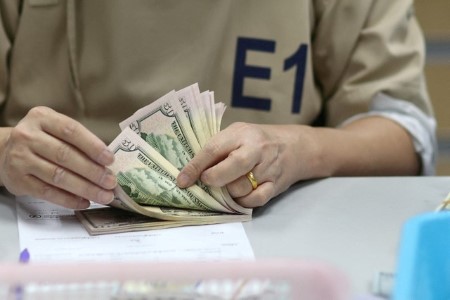




Philippines Trade Update: Trade trajectories trend along
 DOWNLOAD
DOWNLOAD

Policy Rate Updates: Double cut finale
 DOWNLOAD
DOWNLOAD

Monthly Economic Update: One for the road
 DOWNLOAD
DOWNLOAD


US yields keep climbing as prospects of imminent rate cuts wane

NEW YORK, Jan 19 – US Treasuries maintained a bearish bias on Friday as the market digested a string of solid economic data and braced for the prospect of interest rate cuts not being as imminent as many had hoped.
Treasury yields, which move inversely to prices, have been rising over the past few days as central bank officials pushed back against market expectations of a quick shift to lower rates. Data this week has also shown that US economic activity remains resilient despite interest rates at their highest level in decades, which suggests Federal Reserve policymakers will not rush to a more accommodative policy stance.
US consumer sentiment improved in January to the highest level since the summer of 2021 amid optimism over the outlook for inflation and household incomes, the University of Michigan’s survey of consumer sentiment showed on Friday.
The survey’s reading of one-year inflation expectations fell to 2.9% this month from 3.1% in December. Its five-year inflation outlook slipped to 2.8% from 2.9% in the prior month.
Meanwhile, the S&P 500 confirmed on Friday that it has been in a bull market since October 2022, as it notched a record-high close for the first time in two years on optimism around artificial intelligence.
The short-term interest rate futures market showed on Friday that traders were betting interest rate cuts will start in May, with the probability of a March cut dropping below 50%, down from 77% last week, according to CME Group data. Traders had been betting on a March start to Fed rate cuts since late last year, after Fed policymakers signaled they would probably reduce interest rates in 2024.
“It’s been a data-dependent market and that is what has been driving the market and the volatility,” said George Catrambone, DWS Group’s head of fixed income.
“For the moment, more resilience in the data will continue to push projections of cuts in March further out,” Catrambone added.
Atlanta Federal Reserve President Raphael Bostic said on Thursday he expected rate cuts to start in the third quarter. Chicago Fed President Austan Goolsbee on Friday said the Fed still needed weeks more of inflation data before any cut.
US Treasury benchmark 10-year yields were last at 4.145%, hitting their highest level in more than a month and registering their biggest weekly increase since October.
Two-year yields, which tend to more closely reflect monetary policy expectations, were up about five basis points to 4.408%, their highest in two weeks. Weekly gains in two-year yields have been the biggest since May last year.
Further out on the curve, 30-year yields hit an intra-day high of 4.403% on Friday, their highest since early December.
The curve comparing the yields on the 2/10 maturities was at minus 27 basis points – flatter, or more inverted, than Thursday.
Curve inversions occur when short-dated bonds yield more than longer-dated ones. The 2/10 part of the curve, which has been inverted since July 2022, is closely watched by investors as inversions have reliably preceded recessions.
“The economy may not be out of the woods yet with respect to a hard landing. Some further caution may be warranted,” said Joseph LaVorgna, chief economist at SMBC Nikko Securities in New York.
An inverted yield curve tends to un-invert and turn noticeably positive either shortly before or at the initial stage of recession, LaVorgna said in a note.
(Reporting by Davide Barbuscia and Herbert Lash; Editing by Hugh Lawson and Will Dunham)
This article originally appeared on reuters.com





 By Reuters
By Reuters